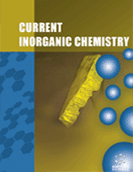Abstract
Background: Studies of transition metal complexes containing cubane core were inspired by the discovery of single-molecule magnetism in this family of compound. β-diketonates are quite often used for creation of cubane complexes. β-Ketosulfones, compounds containing S(O)2CH2C(O) fragment, to certain extent can be considered as analogues of β-diketones. It was intriguing to study the difference and similarities between the coordination behavior of β-diketones and β-ketosulfones, as well as the difference between the properties of 3d metal complexes with these ligands.
Objectives: The aim of this work was to study the structure, magnetic and spectral properties of NiII and CoII complexes with a representative of β-ketosulfone family - analog of well-known β-diketonates.
Methods: Crystallographic data were collected using Xcalibur Sapphire3 diffractometer with Mo-Kα radiation. UV/vis spectra were obtained using a Cary 300 machine in 350-800 nm range. TG experiments were carried our using Q1500 instrument in air. Reflectance spectra were measured on Beckman UV 5240 instrument. 1HNMR spectra were measured at 300 MHz on Bruker WP 100 SY instrument. Magnetic susceptibility measurements were carried out with Quantum Design PPMS-9 magnetometer operating in the range 300-2 K using field of 5000 Oe. Measurements were performed on polycrystalline samples sealed in a polyethylene bag and cover with mineral oil in order to prevent field-induced torquing of the crystals. The magnetic data were corrected for the sample holder, the mineral oil and the diamagnetic contribution.
Results: The reaction of potassium salt of 2-(p-tolylsulfonyl)acetophenone (KL) with CoII and NiII nitrates resulted in the formation of tetranuclear complexes [Ni4(µ3-OCH3)4(H2O)3(CH3OH)(L)4]·H2O (1·H2O) and [Co4(µ3-OCH3)4(CH3OH)4(L)4]·4CH3OH·H2O (2·4CH3OH·H2O). Single crystal X-ray structure analysis showed that both 1·H2O and 2·4CH3OH·H2O possessed [M4(µ3-OCH3)4] tetranuclear cubane cores. Exchange coupling parameters were calculated for both NiII and CoII complexes by the analysis of temperature dependence of magnetic susceptibility by full-matrix diagonalization using a model, which included zero-field splitting (ZFS) of spin levels of metal ions and two (for 1) or one (for 2) different J parameters. All exchange interactions in 1 were found to be ferromagnetic, while for 2 it was concluded that the contributions of ZFS and exchange interactions were comparable.
Conclusion: It was shown that β-sulfoketonate formed NiII and CoII cubanes, similarly to β-diketonates. Two new cubane-like polynuclear complexes were synthesized and characterized. For nickel complex all exchange interactions were ferromagnetic. The values of J for NiII complex were consistent with the ones, expected from the J vs. Ni-O-Ni angle correlation previously proposed for Ni4 β-diketonate cubanes. Magnetic properties of CoII analogue could be fitted using a model, which took into account ZFS of CoII and one J value. It was found that the contributions of ZFS and exchange interactions were comparable.
Keywords: Polynuclear complexes, nickel, cobalt, cubane, magnetic properties, diketonate, sulfonyl.
Graphical Abstract
 17
17 6
6 1
1 1
1

